Given our nation’s relative size and stature, it could be perceived that Irish people differ little from one place to another. From the outside looking in, it could be said that we look, act and sound the same.
But that’s not necessarily true. Really, we’re very diverse!
For there’s a debate currently raging from province to province, county to county, that strikes strong along geographical lines.
Hurley or hurl, what do your people say? 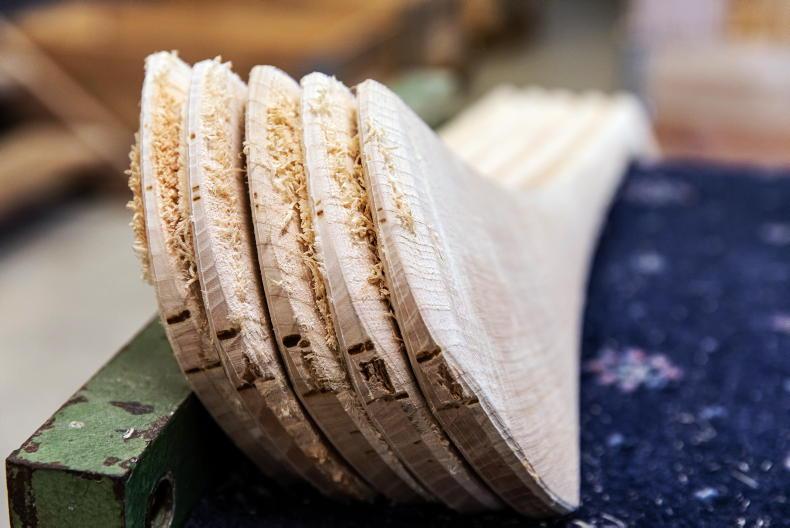
It’s well-known that Munster is the home of hurley diehards. While in Leinster – particularly Kilkenny, Wexford, Laois and Offaly – they wield only hurls. Galway, the hurling heroes of Connacht, are of the hurl also.
This was all verified last year in a ‘Hurl v Hurley’ poll of 25,000 votes conducted by Now TV. The winner? Hurley, of course.
And so for this article, we will deal in hurleys only, disgruntled fans of the hurl can email amckeever@farmersjournal.ie.
After all, we’re off to visit very well-known hurley makers, the Torpeys of Co Clare. Here there are hurleys as far as the eye can see and not a hurl in sight. Also, this writer hails from the neighbouring Treaty County herself. State your bias, isn’t that what they say?
Driving through east Clare, the countryside is punctuated by hurleys. A young girl walking through the village of Kilkishen swings a hurley with a helmet attached, ready to make a return to training, no doubt. GAA goals are visible in a garden, where many an All-Ireland winning point has probably been struck. And even the sign over the door of Norrie Henchy’s pub is adorned with hurleys.
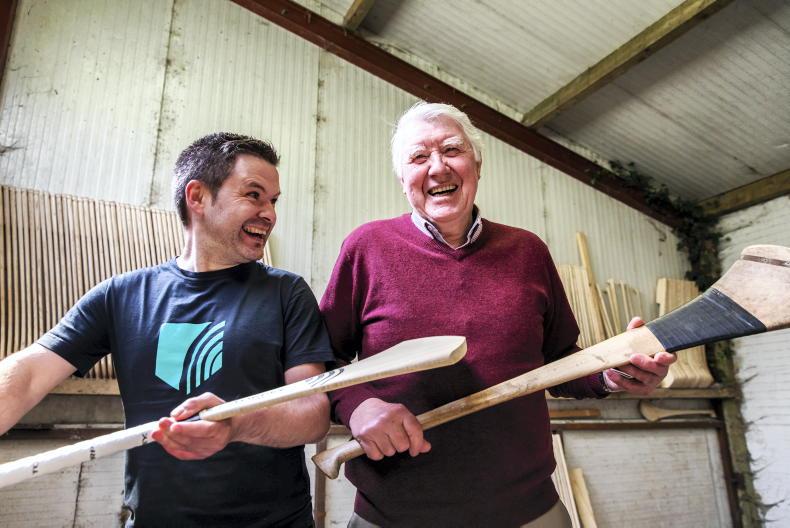
Seán divulges that his father never discussed hurling with the players, nor does he now. Something that seems to resonate. \ Philip Doyle
It claims to be Ireland’s oldest pub, but it can’t be older than the ancient game of hurling itself. A game growing in popularity in the modern day, but steeped in tradition.
However, tradition is not unyielding. This is the very reason Irish Country Living is at Torpey Hurleys in O’Callaghan’s Mills, not far outside Sixmilebridge. We’re here to see father-and-son hurley-making duo, John and Seán Torpey.

Launched last year, their new range of bamboo hurleys – Torpey Bambú – has been making waves in GAA circles of late. Notably, it was Seán Finn’s hurley of choice for Limerick’s 2020 All-Ireland winning campaign, while Clare’s Séadna Morey and John Conlon are among those to have taken to the bamboo too.
To understand change, we must first understand tradition. And it all started with John Torpey, and of course, an ash plank.
From tiny seeds
“You look after the ball and I’ll look after the man.”
Not only is John Torpey a renowned hurley maker, he’s also a gifted storyteller. Sitting in the midday sunshine, one of the first indications of summer, he recounts tales with dates, names and quotations. When he speaks of people, it’s with a great sense of fondness and familiarity. 
Quite simply, John puts it that he was always making his own hurleys. He learned from his uncle, Pop Torpey.
Growing up here on the farm, John was just 16 when he was rounded up unexpectedly of an afternoon to play in goals for O’Callaghan’s Mills against Éire Óg of Ennis. The start of his senior hurling career.
It was a time when you could charge the goalie, so between the posts you had to have your wits about you. The only advice going out on the pitch was offered to him by his fullback, Liam Lynch.
“Liam takes me by the hand going out and he didn’t even know who I was. He says, ‘Now you listen to me sonny, you look after the ball and I’ll look after the man.’ That was the only direction I got going onto the field.”
John went on to serve his time as a hardware apprentice in Ennis. He then became head of timber and glass cutting at T&C Martins in Bray, Co Wicklow. Here he lived for years and met his wife Mary.
While living in Wicklow, John hurled for the county. Winning a junior All-Ireland with them in 1967. In fact, the man actually has three All-Irelands. The year before, 1966, he won an All-Ireland in first aid with the Red Cross and in 1983 he won a set dancing All-Ireland with O’Callaghan’s Mills.
In fact, he actually taught set dancing for 25 years and plays a bit of music too, just for good measure. Quite the CV, I’m sure you’ll agree.
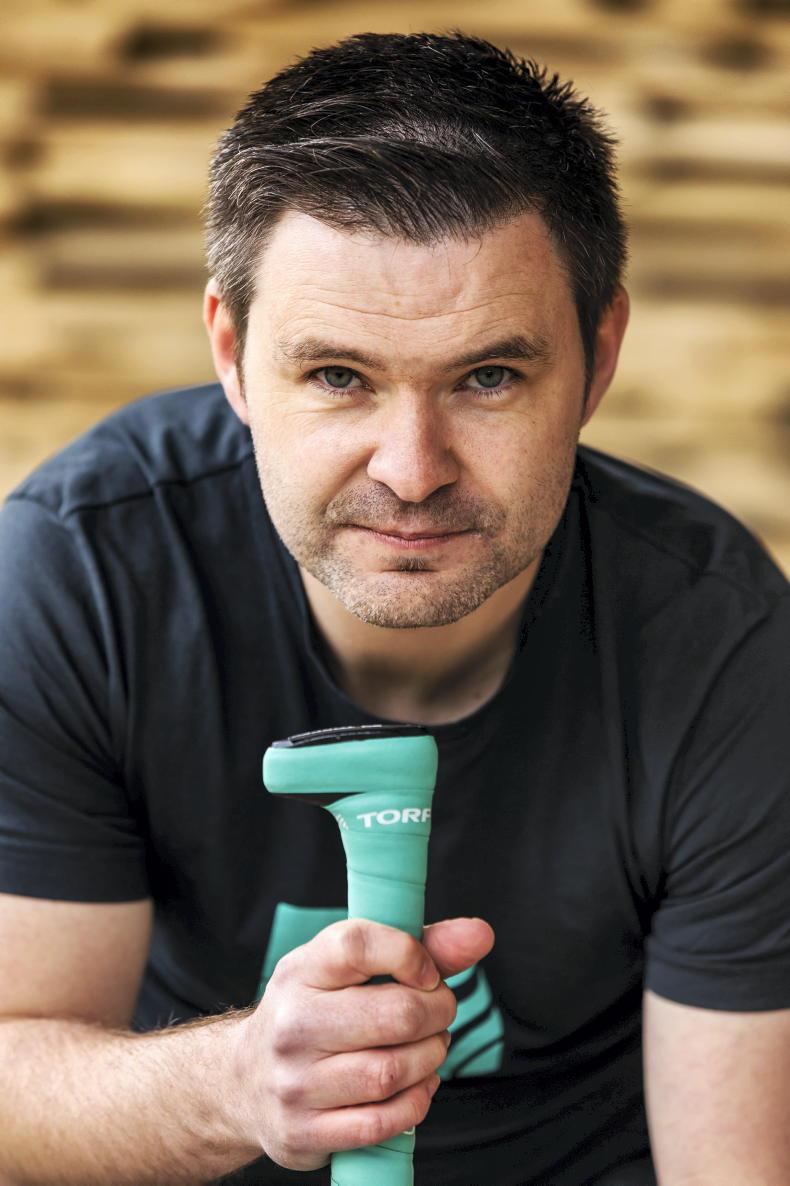
When he moved home to take over the farm, once again John hurled for O’Callghan’s Mills. He played until he was 52.
On the farming side of things, his repertoire is equally diverse. Initially he went dairying, supplying Kerry Co-op. In the early 1990s he sold up the quota and went suckling, eventually getting out of farming altogether. But along the way he contracted, as well as planting cabbages and potatoes, among other things.
At this juncture, Seán is quick to shine a light on others – his five older sisters; Patricia, Pauline, Connie, Claire and Karol. Both in hurley making and farming, his older sisters were heavily involved, ever before Seán came along. They’re credited with picking stones, pulling cabbages and a whole host of other jobs.
Grow mighty trees
“The sure way to miss success is to miss the opportunity.”
Officially, John started his hurley-making business in 1981. For a long time he was hurley making alongside farming. Often in the beginning, the hurley making wasn’t profitable. “My creamery cheque paid for a lot of stuff,” John says, matter-of-factly.
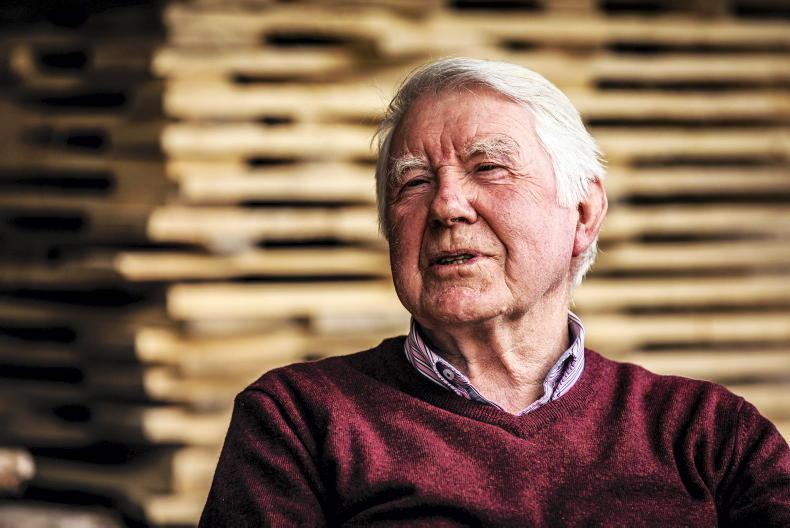
John is a champion dancer and taught set dancing for 25 years.\ Philip Doyle
But when Clare hurling rose in the 90s, so did John’s business. Davy Fitz and Brian Lohan were both using his sticks in 1995 when Clare won the Munster final and went on to win the All-Ireland after an 81-year hiatus.
Ironically, this year of all years, with the people of Clare crying out for hurleys, John was very low on ash. Finally he got sorted with timber through a friend in Wicklow.
John credits developing personal relationships with players as to how big name hurlers started using his sticks. Seán divulges that his father never discussed hurling with the players, nor does he now. Something that seems to resonate.
At times, John’s remit of hurley maker stretched beyond the crafting of sticks.
“There were a number of individuals (players) that would come to me,” John explains. “Nobody knows about it because I never said it, they’d come and have a chat with me the night before a match. They’d drive the car in to the yard and it wouldn’t be for hurleys.
“I didn’t let on that they were coming for a specific chat and they didn’t want me to know that they were nervous about the game. We never talked about the match. We had a regular conversation. I’d ask if there was a problem with a hurley, and if there was, I’d take care of it.”
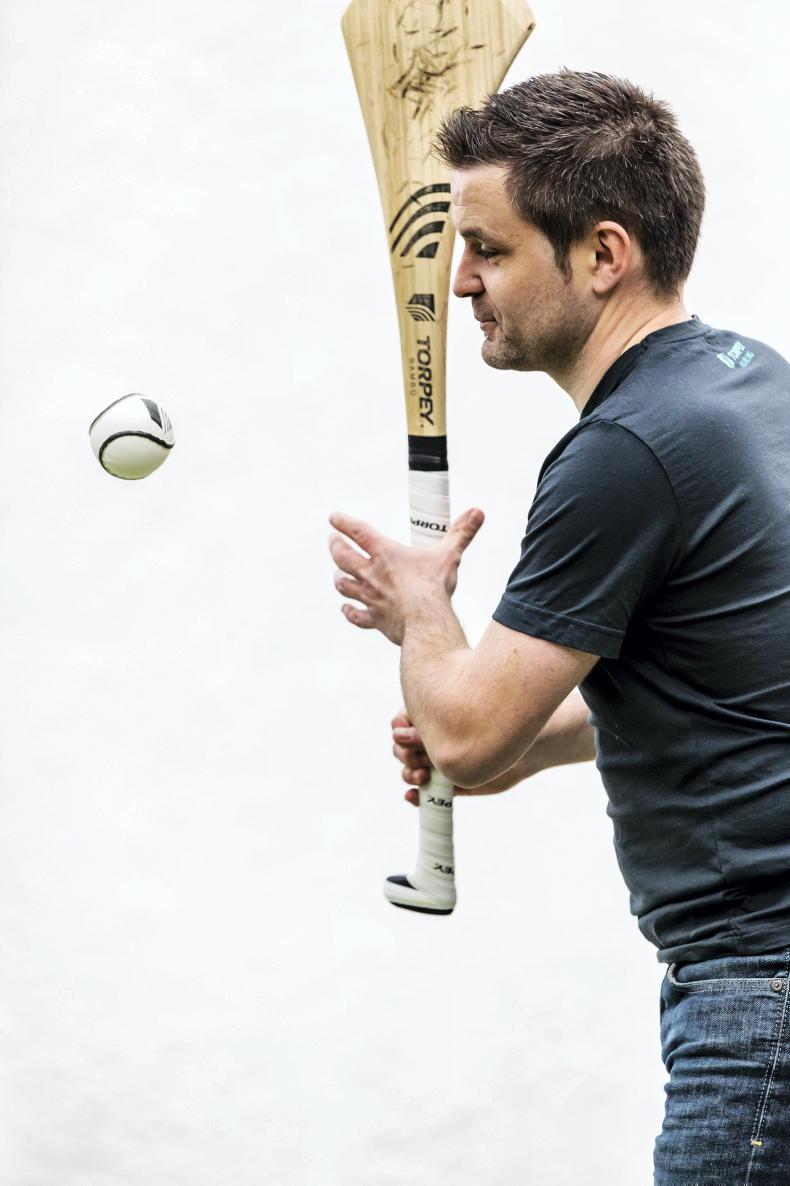
Sean studied sports engineering Loughborough University. \ Philip Doyle
In terms of ash, both John and Seán agree that it was always hard got. In the late 90s John was one of the first hurley makers to go abroad in search of ash. It was in a meeting with Coillte that he decided to take the leap and go to Holland to look at their ash plantations.
“I picked up the little tear-off calendar slip the young lady had on her desk. It was 2 July 1998. I looked at the script at the bottom. It said, ‘The sure way to miss success is to miss the opportunity.’ I said, ‘I’m going with this opportunity.’”
So started a long relationship of the Torpeys bringing in ash from Holland. However, John didn’t give up on Irish ash altogether. In 2003 he planted 20 acres of ash trees under a Government scheme, which he says was “totally and solely for Seán’s future”.
In 2015, they realised the trees had ash dieback, a fungal disease that first came to Ireland in 2012. It renders the trees useless for hurley making.
“I love ash, always have,” says John. “To see them dying in front of your eyes, no leaves coming on certain trees – we knew from research on it that it wasn’t good.”
“Many people would plant trees in wasteland, up the side of a mountain or something. Ash won’t grow on poor land.
“For hurleys anyway,” Seán interjects. 
“I sowed the best of my land,” John continues. “Where I sowed 30,000 head of cabbage, I sowed those trees, there for everybody to see. Where I baled hay off, it’s there for everybody to see. Where my father had sugar beet, there’s beautiful tall ash trees. But they’re all dead.”
The hurley factory is in the same yard as Seán’s house – once John and Mary’s. The plantation is still there beside it, just by the turn for the 12 O’Clock Hills.
Root and branches review
“Whatever you do, make a quality product and you’ll never be out of a job.”
You won’t be surprised, really, to learn that after school Seán did a degree in furniture restoration and conservation. Afterwards he worked in the family business until he was 26, when things changed a little.
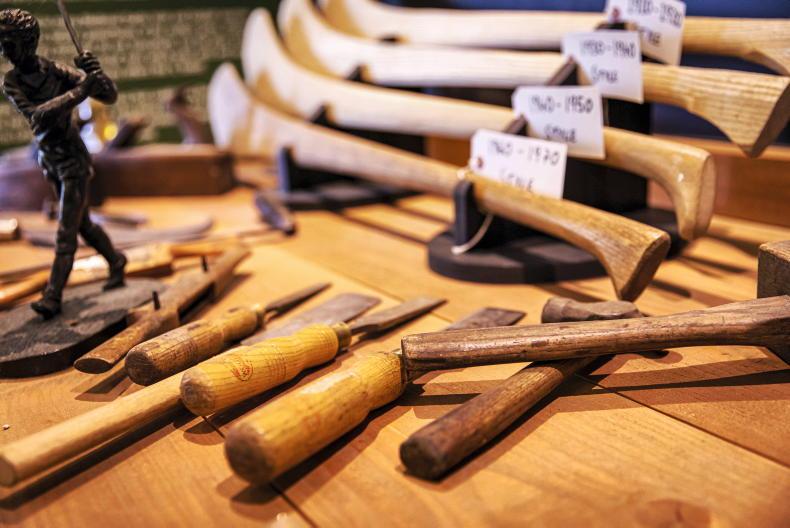
“At 26 I was thinking, ‘Do I really know what the future holds here? Do I really know what’s happening down the road and am I ready for that?’ I decided I’d go back to university at 26 and study sports engineering. It was a big decision for me,” Seán recalls.
He went to Loughborough University in England, afterwards going on to work as part of Adidas’s innovation team in Germany. But it wasn’t long before the call of Clare brought him home again.
In tandem with all this, ash being uncertain and at times unreliable, John and Seán began brainstorming new materials. It was John who first came up with the idea of making a bamboo hurley, having looked into its uses, particularly in building.
Over a number of years Torpey Hurleys invested €300,000 into developing the bamboo hurley. They tested it at Loughborough University, as well as getting players to do blind trails. But the first real endorsement was when they took one of the first prototypes out in the yard.
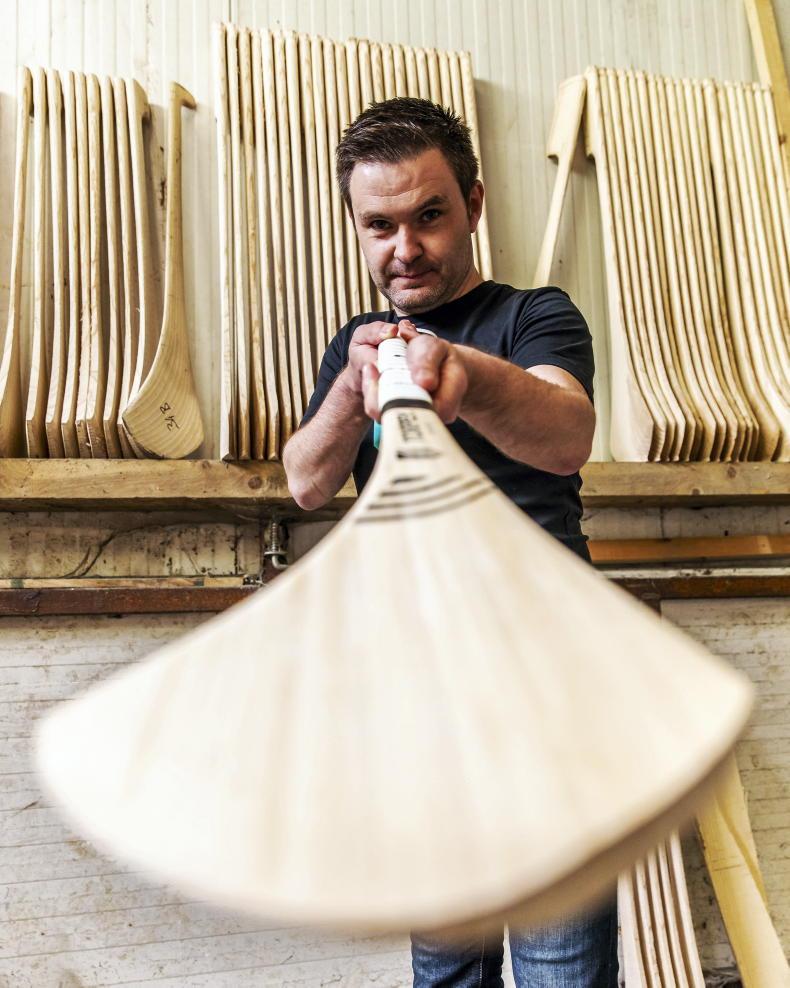
“We would have come out here to the yard and hit a few pucks with the bamboo hurley,” says Seán.
“We’re not going to play in an All-Ireland final myself and Dad, but at this stage I’d like to think we know what a good hurley feels like. The first thing we noticed was, okay, we’ve something to work with here now. It sounded the same and it felt good.”
Bamboo is a grass, not a wood. Torpeys import their bamboo from Southeast Asia. The hurley is made of bamboo fibres. Other than that, Seán is keeping tight-lipped on how it’s constructed, which is patented. To date they’ve sold 3,500 bamboo hurleys and are, of course, still selling ash hurleys as well.
In pioneering the bamboo hurley, Irish Country Living wonders was there a fear players would be unwilling to change from traditional ash. Seán says, no, that they had to try something different, regardless.
As always, John has a philosophical take on things: “My own father said to me, ‘Whatever you do, make a quality product and you’ll never be out of a job.’ I instilled that in Seán too. I always said to him as well when he felt frustrated, ‘It’s a bad tree that bends with every wind’ and he never forgot it either.”
Although many are still arguing the hurley v hurl toss, that conversation could be running its course. Maybe there’s to be a new debate on the horizon: ash v bamboo.
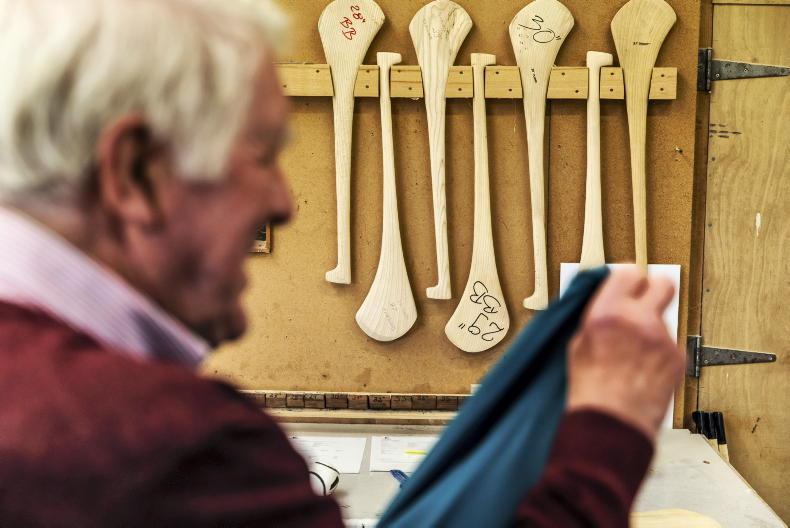
Did you know?
When Clare won the All-Ireland in 2013, Colin Ryan was the top scorer in the country, with 61 points from the same Torpey hurley.
Read more
Podcast: Franz Sauerland on Gaeilge, football and experiencing racial abuse
Hurleys, heifers and hard work
Given our nation’s relative size and stature, it could be perceived that Irish people differ little from one place to another. From the outside looking in, it could be said that we look, act and sound the same.
But that’s not necessarily true. Really, we’re very diverse!
For there’s a debate currently raging from province to province, county to county, that strikes strong along geographical lines.
Hurley or hurl, what do your people say? 
It’s well-known that Munster is the home of hurley diehards. While in Leinster – particularly Kilkenny, Wexford, Laois and Offaly – they wield only hurls. Galway, the hurling heroes of Connacht, are of the hurl also.
This was all verified last year in a ‘Hurl v Hurley’ poll of 25,000 votes conducted by Now TV. The winner? Hurley, of course.
And so for this article, we will deal in hurleys only, disgruntled fans of the hurl can email amckeever@farmersjournal.ie.
After all, we’re off to visit very well-known hurley makers, the Torpeys of Co Clare. Here there are hurleys as far as the eye can see and not a hurl in sight. Also, this writer hails from the neighbouring Treaty County herself. State your bias, isn’t that what they say?
Driving through east Clare, the countryside is punctuated by hurleys. A young girl walking through the village of Kilkishen swings a hurley with a helmet attached, ready to make a return to training, no doubt. GAA goals are visible in a garden, where many an All-Ireland winning point has probably been struck. And even the sign over the door of Norrie Henchy’s pub is adorned with hurleys.

Seán divulges that his father never discussed hurling with the players, nor does he now. Something that seems to resonate. \ Philip Doyle
It claims to be Ireland’s oldest pub, but it can’t be older than the ancient game of hurling itself. A game growing in popularity in the modern day, but steeped in tradition.
However, tradition is not unyielding. This is the very reason Irish Country Living is at Torpey Hurleys in O’Callaghan’s Mills, not far outside Sixmilebridge. We’re here to see father-and-son hurley-making duo, John and Seán Torpey.

Launched last year, their new range of bamboo hurleys – Torpey Bambú – has been making waves in GAA circles of late. Notably, it was Seán Finn’s hurley of choice for Limerick’s 2020 All-Ireland winning campaign, while Clare’s Séadna Morey and John Conlon are among those to have taken to the bamboo too.
To understand change, we must first understand tradition. And it all started with John Torpey, and of course, an ash plank.
From tiny seeds
“You look after the ball and I’ll look after the man.”
Not only is John Torpey a renowned hurley maker, he’s also a gifted storyteller. Sitting in the midday sunshine, one of the first indications of summer, he recounts tales with dates, names and quotations. When he speaks of people, it’s with a great sense of fondness and familiarity. 
Quite simply, John puts it that he was always making his own hurleys. He learned from his uncle, Pop Torpey.
Growing up here on the farm, John was just 16 when he was rounded up unexpectedly of an afternoon to play in goals for O’Callaghan’s Mills against Éire Óg of Ennis. The start of his senior hurling career.
It was a time when you could charge the goalie, so between the posts you had to have your wits about you. The only advice going out on the pitch was offered to him by his fullback, Liam Lynch.
“Liam takes me by the hand going out and he didn’t even know who I was. He says, ‘Now you listen to me sonny, you look after the ball and I’ll look after the man.’ That was the only direction I got going onto the field.”
John went on to serve his time as a hardware apprentice in Ennis. He then became head of timber and glass cutting at T&C Martins in Bray, Co Wicklow. Here he lived for years and met his wife Mary.
While living in Wicklow, John hurled for the county. Winning a junior All-Ireland with them in 1967. In fact, the man actually has three All-Irelands. The year before, 1966, he won an All-Ireland in first aid with the Red Cross and in 1983 he won a set dancing All-Ireland with O’Callaghan’s Mills.
In fact, he actually taught set dancing for 25 years and plays a bit of music too, just for good measure. Quite the CV, I’m sure you’ll agree.

When he moved home to take over the farm, once again John hurled for O’Callghan’s Mills. He played until he was 52.
On the farming side of things, his repertoire is equally diverse. Initially he went dairying, supplying Kerry Co-op. In the early 1990s he sold up the quota and went suckling, eventually getting out of farming altogether. But along the way he contracted, as well as planting cabbages and potatoes, among other things.
At this juncture, Seán is quick to shine a light on others – his five older sisters; Patricia, Pauline, Connie, Claire and Karol. Both in hurley making and farming, his older sisters were heavily involved, ever before Seán came along. They’re credited with picking stones, pulling cabbages and a whole host of other jobs.
Grow mighty trees
“The sure way to miss success is to miss the opportunity.”
Officially, John started his hurley-making business in 1981. For a long time he was hurley making alongside farming. Often in the beginning, the hurley making wasn’t profitable. “My creamery cheque paid for a lot of stuff,” John says, matter-of-factly.

John is a champion dancer and taught set dancing for 25 years.\ Philip Doyle
But when Clare hurling rose in the 90s, so did John’s business. Davy Fitz and Brian Lohan were both using his sticks in 1995 when Clare won the Munster final and went on to win the All-Ireland after an 81-year hiatus.
Ironically, this year of all years, with the people of Clare crying out for hurleys, John was very low on ash. Finally he got sorted with timber through a friend in Wicklow.
John credits developing personal relationships with players as to how big name hurlers started using his sticks. Seán divulges that his father never discussed hurling with the players, nor does he now. Something that seems to resonate.
At times, John’s remit of hurley maker stretched beyond the crafting of sticks.
“There were a number of individuals (players) that would come to me,” John explains. “Nobody knows about it because I never said it, they’d come and have a chat with me the night before a match. They’d drive the car in to the yard and it wouldn’t be for hurleys.
“I didn’t let on that they were coming for a specific chat and they didn’t want me to know that they were nervous about the game. We never talked about the match. We had a regular conversation. I’d ask if there was a problem with a hurley, and if there was, I’d take care of it.”

Sean studied sports engineering Loughborough University. \ Philip Doyle
In terms of ash, both John and Seán agree that it was always hard got. In the late 90s John was one of the first hurley makers to go abroad in search of ash. It was in a meeting with Coillte that he decided to take the leap and go to Holland to look at their ash plantations.
“I picked up the little tear-off calendar slip the young lady had on her desk. It was 2 July 1998. I looked at the script at the bottom. It said, ‘The sure way to miss success is to miss the opportunity.’ I said, ‘I’m going with this opportunity.’”
So started a long relationship of the Torpeys bringing in ash from Holland. However, John didn’t give up on Irish ash altogether. In 2003 he planted 20 acres of ash trees under a Government scheme, which he says was “totally and solely for Seán’s future”.
In 2015, they realised the trees had ash dieback, a fungal disease that first came to Ireland in 2012. It renders the trees useless for hurley making.
“I love ash, always have,” says John. “To see them dying in front of your eyes, no leaves coming on certain trees – we knew from research on it that it wasn’t good.”
“Many people would plant trees in wasteland, up the side of a mountain or something. Ash won’t grow on poor land.
“For hurleys anyway,” Seán interjects. 
“I sowed the best of my land,” John continues. “Where I sowed 30,000 head of cabbage, I sowed those trees, there for everybody to see. Where I baled hay off, it’s there for everybody to see. Where my father had sugar beet, there’s beautiful tall ash trees. But they’re all dead.”
The hurley factory is in the same yard as Seán’s house – once John and Mary’s. The plantation is still there beside it, just by the turn for the 12 O’Clock Hills.
Root and branches review
“Whatever you do, make a quality product and you’ll never be out of a job.”
You won’t be surprised, really, to learn that after school Seán did a degree in furniture restoration and conservation. Afterwards he worked in the family business until he was 26, when things changed a little.

“At 26 I was thinking, ‘Do I really know what the future holds here? Do I really know what’s happening down the road and am I ready for that?’ I decided I’d go back to university at 26 and study sports engineering. It was a big decision for me,” Seán recalls.
He went to Loughborough University in England, afterwards going on to work as part of Adidas’s innovation team in Germany. But it wasn’t long before the call of Clare brought him home again.
In tandem with all this, ash being uncertain and at times unreliable, John and Seán began brainstorming new materials. It was John who first came up with the idea of making a bamboo hurley, having looked into its uses, particularly in building.
Over a number of years Torpey Hurleys invested €300,000 into developing the bamboo hurley. They tested it at Loughborough University, as well as getting players to do blind trails. But the first real endorsement was when they took one of the first prototypes out in the yard.

“We would have come out here to the yard and hit a few pucks with the bamboo hurley,” says Seán.
“We’re not going to play in an All-Ireland final myself and Dad, but at this stage I’d like to think we know what a good hurley feels like. The first thing we noticed was, okay, we’ve something to work with here now. It sounded the same and it felt good.”
Bamboo is a grass, not a wood. Torpeys import their bamboo from Southeast Asia. The hurley is made of bamboo fibres. Other than that, Seán is keeping tight-lipped on how it’s constructed, which is patented. To date they’ve sold 3,500 bamboo hurleys and are, of course, still selling ash hurleys as well.
In pioneering the bamboo hurley, Irish Country Living wonders was there a fear players would be unwilling to change from traditional ash. Seán says, no, that they had to try something different, regardless.
As always, John has a philosophical take on things: “My own father said to me, ‘Whatever you do, make a quality product and you’ll never be out of a job.’ I instilled that in Seán too. I always said to him as well when he felt frustrated, ‘It’s a bad tree that bends with every wind’ and he never forgot it either.”
Although many are still arguing the hurley v hurl toss, that conversation could be running its course. Maybe there’s to be a new debate on the horizon: ash v bamboo.

Did you know?
When Clare won the All-Ireland in 2013, Colin Ryan was the top scorer in the country, with 61 points from the same Torpey hurley.
Read more
Podcast: Franz Sauerland on Gaeilge, football and experiencing racial abuse
Hurleys, heifers and hard work

















 This is a subscriber-only article
This is a subscriber-only article










SHARING OPTIONS: